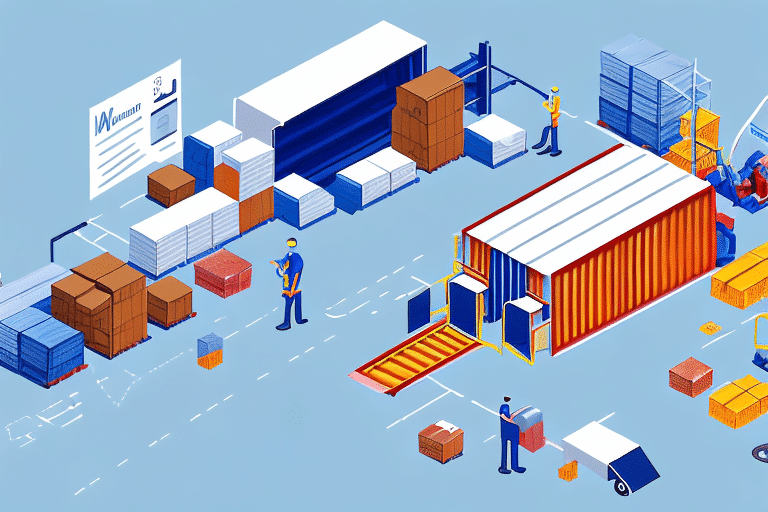Why Ecommerce Businesses Need 3PLs
Ecommerce businesses are experiencing unprecedented growth, with global online sales surpassing $5 trillion in 2022 [[source](https://www.statista.com/statistics/379046/worldwide-third-party-logistics-market-size/)]. This surge brings challenges in inventory management, order fulfillment, and meeting rising customer expectations. Third-party logistics providers (3PLs) offer solutions that allow businesses to navigate these complexities effectively.
Managing Order Fulfillment
Handling order fulfillment in-house can be resource-intensive, especially for small to medium-sized enterprises (SMEs). 3PLs specialize in managing the entire fulfillment process, from warehousing to shipping, enabling businesses to focus on core activities like marketing and product development.
Improving Shipping and Delivery Times
Fast and reliable shipping is crucial for customer satisfaction. 3PLs have established relationships with multiple carriers, allowing them to negotiate better rates and ensure quicker delivery times. This competitive advantage is essential for standing out in the crowded ecommerce landscape.
Accessing Value-Added Services
Beyond basic logistics, 3PLs offer value-added services such as kitting, assembly, and returns management. These services streamline operations and enhance the overall customer experience by ensuring products are delivered accurately and efficiently.
Understanding the Basics of 3PLs
What is a 3PL?
A third-party logistics provider is an external company that manages various aspects of a business’s supply chain. Services typically include warehousing, order fulfillment, shipping, and inventory management [[source](https://en.wikipedia.org/wiki/Third-party_logistics)].
Key Services Offered by 3PLs
- Warehousing and Storage
- Order Fulfillment
- Shipping and Transportation
- Inventory Management
- Reverse Logistics
Benefits of Using 3PLs for Ecommerce Operations
Cost Savings and Efficiency
Outsourcing logistics to a 3PL can significantly reduce overhead costs related to warehousing, technology, and labor. Additionally, 3PLs leverage economies of scale to provide cost-effective shipping solutions.
Access to Advanced Technology
3PLs invest in state-of-the-art logistics software and systems, offering ecommerce businesses access to real-time inventory tracking, automated order processing, and data analytics. This technology enhances operational efficiency and decision-making [[source](https://www2.deloitte.com/us/en/pages/operations/articles/third-party-logistics-grocery-retail.html)].
Enhancing Customer Experience
Reliable and speedy delivery improves customer satisfaction and loyalty. 3PLs provide tracking information and timely updates, ensuring customers are informed about their orders' status throughout the shipping process.
Choosing the Right 3PL Partner
Key Factors to Consider
- Location: Proximity to major markets reduces shipping times and costs.
- Expertise: Specialized knowledge in ecommerce logistics is essential.
- Technology: Integration capabilities with your ecommerce platform are crucial.
- Reputation: Look for providers with positive reviews and proven track records.
- Pricing: Transparent and scalable pricing structures should align with your budget.
Evaluating Customer Service and Scalability
Excellent customer service ensures that any issues are resolved promptly. Additionally, the chosen 3PL should be able to scale their services in line with your business growth, accommodating increased order volumes and expanding product lines.
Implementing and Managing Your 3PL Strategy
Integrating Your Ecommerce Platform
Seamless integration between your ecommerce platform and the 3PL provider’s systems is vital for efficient data exchange and order processing. This integration is typically achieved through application programming interfaces (APIs) [[source](https://www.shopify.com/blog/fulfillment)].
Best Practices for Managing the Relationship
- Establish clear communication channels.
- Set and monitor key performance indicators (KPIs).
- Conduct regular performance reviews.
- Foster collaboration to address and resolve issues promptly.
Measuring Success and Overcoming Challenges
Evaluate the effectiveness of your 3PL strategy by tracking metrics such as order accuracy, shipping times, customer satisfaction, and return rates. Common challenges like communication breakdowns and inventory management errors can be mitigated through proactive management and the implementation of robust systems [[source](https://www.shopify.com/blog/shipping-delays)].
Future Trends in 3PL for Ecommerce
The 3PL landscape is evolving with advancements in technology and changing consumer expectations. Key trends include:
- Automation and Robotics: Increased use of automation in warehouses to enhance speed and accuracy.
- Sustainability: Growing emphasis on eco-friendly logistics practices.
- AI and Machine Learning: Leveraging AI for predictive analytics and intelligent inventory management.
- Omnichannel Fulfillment: Integrating multiple sales channels to provide a unified customer experience.
Case Studies: Successful 3PL Implementations
Several ecommerce businesses have effectively utilized 3PL services to enhance their operations:
- Casper: The mattress company partnered with a 3PL provider to manage logistics and inventory, resulting in streamlined operations and improved delivery times.
- Glossier: This beauty products company utilizes a 3PL for order fulfillment, allowing them to maintain a focus on product innovation and customer engagement.
These examples highlight the significant impact that a well-chosen 3PL partner can have on business efficiency and growth.
Costs Involved in Using a 3PL for Your Ecommerce Business
The cost structure of 3PL services varies based on factors such as order volume, product types, and required services. Common costs include:
- Fulfillment Fees: Charged per order processed.
- Storage Fees: Based on the amount of space your inventory occupies.
- Shipping Fees: Vary depending on package size, weight, and destination.
- Additional Services: Fees for value-added services like kitting, assembly, and returns processing.
Ecommerce businesses should thoroughly evaluate these costs to ensure they align with their financial planning and operational needs.
Conclusion
Ecommerce businesses need to leverage 3PLs to efficiently manage their logistics operations. By partnering with the right 3PL provider, businesses can save time and money, reduce costs, and streamline their operations. It's important to choose a provider that aligns with your specific ecommerce needs, establish clear communication channels, regularly review and monitor performance metrics, and work collaboratively to address any issues promptly. By following these best practices, ecommerce businesses can build a successful and efficient logistics strategy that supports their growth and customer satisfaction goals.






















